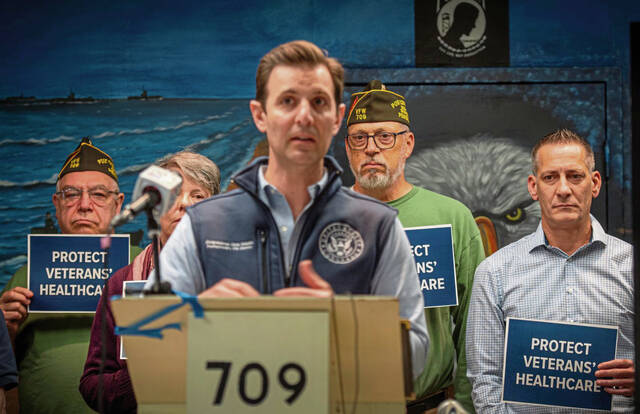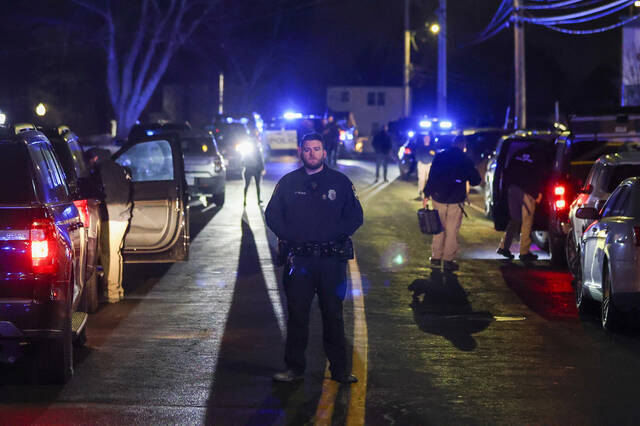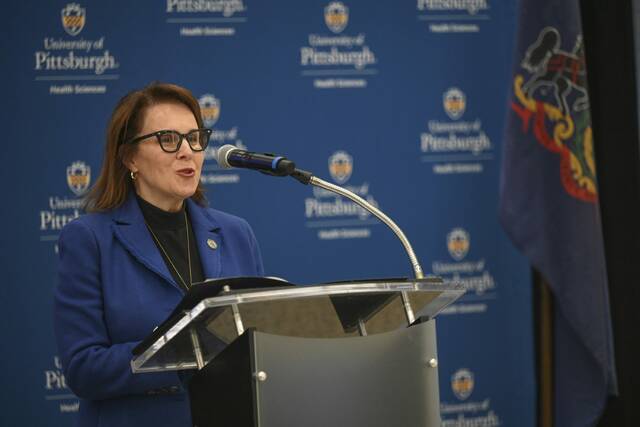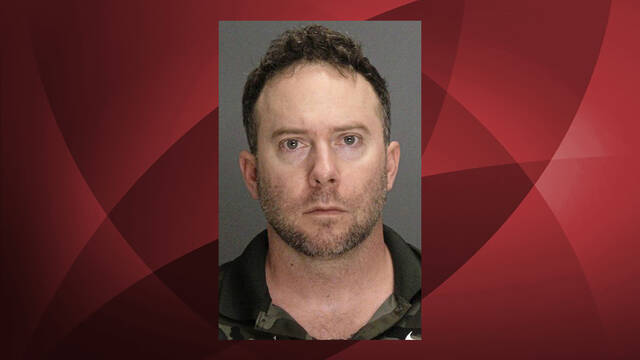Pittsburgh Regional Transit is recommending drastic changes — a 25-cent fare hike and steep, widespread service cuts — to address what it said is a huge budget deficit and insufficient state aid.
If ultimately approved by the transit agency’s board, the fare hike would take effect next year.
Single-ride fares would rise to $3 from $2.75 effective Feb. 1, 2026, and become among the highest public-transit fares in the nation.
Proposed service reductions would eliminate the transit agency’s light-rail Silver Line and 41 of its roughly 100 bus routes.
It would also end all service after 11 p.m., spike rates for the elderly and disabled for the first time in 12 years, and reduce service by at least 30% on 34 other routes.
Such severe cuts would be the agency’s largest service rollback in a decade. The proposed cuts are detailed at rideprt.org/funding-crisis.
“These are very, very significant, draconian cuts, cuts for people who have no other way to get around,” said Amy Silbermann, the agency’s chief development officer, who called the proposed cuts “brutal.”
The full board will contemplate the moves in an effort to plug a huge hole in the agency’s budget for the next fiscal year, which starts July 1.
The agency is facing a $100 million deficit in 2026 and a projected $1.8 billion shortfall over the next 10 years, CEO Katharine Kelleman told a board committee Thursday morning at the agency’s headquarters in Downtown Pittsburgh.
Without drastic action, “we are talking catastrophic service cuts,” Kelleman said. “Pittsburgh Regional Transit has a deficit. This is not unique. This is not new. But this is critical.”
The agency dipped into its reserves to close this year’s budget gap.
Adam Brandolph, an agency spokesperson, said projections call for reserves — which are used to cover various expenses — to stand at $360 million at the end of the fiscal year.
Chief Financial Officer Dominica Brown said the proposed fare hike will make Pittsburgh’s public buses some of the costliest to ride in the U.S.
“Allegheny County already has some of the highest fares in the nation,” Brown said. “This fare increase will move us to the fifth-highest fare in the nation.”
The agency’s planning and stakeholder relations committee voted unanimously to open a public comment period from March 31 to June 18 to allow input on the proposed changes.
Next Friday, the full board plans to meet to discuss the proposal.
‘Death spiral’
Silbermann said Pittsburgh Regional Transit has lost 36% of service over the past 20-odd years.
The proposed changes would reduce current service by up to 40% and boost both fixed route and paratransit fares, according to the presentation to the committee.
On the chopping block: Part of the 28X Airport Flyer’s route. Under the agency’s proposal, it would run only between Pittsburgh International Airport and Carnegie Station, eliminating service to Downtown and Oakland, as well as Crafton and Sheraden.
Cuts would completely strip bus service from 19 towns throughout the county and three Pittsburgh neighborhoods — Banksville, Ridgemont and Swisshelm Park.
In light-rail transit, the Silver Line, which runs between the North Shore and Library via Overbrook, would disappear. Service on the Red Line between the North Shore and South Hills Village via Castle Shannon would be shrunk by 30%.
Paratransit service is proposed to decrease more than 60% while its fares increase by 20%, officials said.
The proposal also provides no funding for “special services,” such as overtime pay for employees during Pittsburgh Steelers or Pirates games — or the NFL Draft in 2026, which is expected to draw 500,000 people to the region, Silbermann said.
“We could start a death spiral,” she added, “where fewer people ride and cut services. And then fewer people ride.”
Brandolph, the agency spokesperson, discussed the anticipated moves with reporters earlier this week.
“State funding, having not increased the share to public transit in more than a decade, does not meet the needs of public transit in Allegheny County,” Brandolph told TribLive news partner WTAE on Tuesday. “(It) has caused a funding crisis at Pittsburgh Regional Transit.”
Riders react
The advocacy group Pittsburghers for Public Transit warned of the profound impact on riders if the cuts as envisioned take effect.
“Pittsburgh Regional Transit is bleeding and we need to stop the damage,” said Laura Chu Wiens, the group’s executive director, in a prepared statement.
“This (proposal) would effectively kill public transit in our region — and the commensurate damage to our riders, our economy, our health care system, our road congestion and air quality is incalculable,” she added.
State Rep. Jessica Benham, D-South Side, took to social media to call for more state funding.
“PRT needs more state funding to maintain and improve service,” posted Benham, who described herself as a transit rider like thousands of her constituents. “As more details are being announced this morning about the potential for cuts if state funding does not increase, it’s my commitment to continue to fight for the funding necessary to protect our transit system.”
Bus ridership in many cities nationwide was hit hard by the pandemic — and has not bounced back.
Total Pittsburgh Regional Transit ridership topped 33 million rides in the last fiscal year, slipping slightly from a year earlier, the agency said.
Fare revenues, however, have dropped.
Seeking state help
Officials expect Pittsburgh Regional Transit revenues to continue to decrease to an estimated $50 million by fiscal year 2027, down from about $57 million in fiscal 2024.
The agency received more than $500 million in federal stimulus funding to mitigate the impact of the pandemic, the agency said in its fiscal 2025 report.
But that money has run out, the agency said. And state funding, which the agency said has remained static for the past decade, can’t keep pace with expenses.
“Rising costs due to inflation, healthcare, and other operational expenses have widened the gap,” according to the agency.
It is seeking a $117 million increase in funds from Harrisburg starting in the budget year that begins July 1.
Brandolph said that amount, plus increases of 2-3% per year and Allegheny County’s match would allow the agency to maintain current service levels for the next 10 years.
Gov. Josh Shapiro has asked for a $300 million increase — about 20% more — in total public transit funding in his budget proposal.
That amount funds more than two dozen transit agencies statewide, with the lion’s share going to the Southeastern Transportation Authority in Philadelphia.
Pittsburgh Regional Transit said even if the legislature were to approve what the governor wants, it still wouldn’t be enough.
”Even Gov. Shapiro’s proposal to increase the public transit share of the state sales tax, which could generate an additional $40 million for PRT, would fall short of what PRT needs to maintain current service,” the agency said.








